10% Happier by Dan Harris takes you on a transformative journey toward finding more happiness and peace through meditation. Can this book help you overcome skepticism about meditation? Does Dan Harris, an acclaimed news anchor, share personal anecdotes, scientific research, and practical advice to guide you? Can you discover the benefits of mindfulness and its impact on your well-being?
Can meditation demystify the practice and make it accessible to skeptics and beginners? Can it provide valuable insights and tools for busy professionals and skeptical thinkers seeking clarity and peace? Can you explore meditation techniques and the science behind mindfulness? Are you ready for a transformative journey to enhance happiness and reduce stress? Let’s dive in!
Introduction
Today, we will discuss the book 10% Happier written by Dan Harris, which is considered one of the best books on meditation. The author emphasizes the significance of meditation and how it can lead to a 10% increase in happiness when practiced mindfully. Mindfulness, in this context, refers to a state of being fully present and aware of our surroundings, such as feeling the wind or attentively listening to bird sounds.
James Clear, the renowned author of “Atomic Habits,” shared his thoughts after reading this book, stating, “My previous beliefs about meditation were incorrect. Based on my experience, meditation does make you 10% happier.” This highlights the profound impact that meditation can have on our lives. Swami Vivekananda, when asked about something he wanted to do for the rest of his life, replied with a single word: “Meditation.” This further underscores the importance of meditation in our daily lives.
Often, we tend to view certain traits, like a quick temper or moody behavior, as fixed aspects of our personality. However, in reality, these are learned behaviors that can be improved. Many individuals mistakenly believe that achieving success in their field requires constant stress and worry. On the contrary, by approaching our work with happiness and contentment, we can enjoy the journey towards our goals.

Significant life improvements often result from small, consistent changes. Just because we can’t change everything immediately doesn’t mean we can’t make progress. Similar to how exercises target specific muscles but eventually strengthen the entire body when practiced over time, implementing effective strategies may yield minor results initially but can lead to significant transformations if maintained consistently.
In the book, Harris emphasises that there is no limit to what can contribute to our happiness. Even small changes, when embraced daily, can have a substantial impact. The key to happiness lies in accepting and appreciating these incremental changes as they occur.
Meditation aids in achieving mental balance by focusing on the breath, inhaling and exhaling slowly, and maintaining this pattern. To meditate effectively, find a comfortable position, ensure your spine is straight, concentrate on a specific point, and whenever your focus wavers, redirect your attention to your breath. Meditation allows you to momentarily calm your restless mind. Mindfulness, on the other hand, involves observing thoughts both within and outside yourself without becoming emotionally attached to them. It is about being aware of how much reaction is necessary in different situations.
Some individuals worry that meditation might lead to a loss of their established self-image and diminish their motivation to improve. Mindfulness, however, promotes self-awareness. It involves acknowledging and accepting the events and emotions surrounding you. By practicing mindfulness, you step outside the circle of emotions and gain control over them, rather than allowing emotions to govern your life.
Mindfulness does not eliminate life’s challenges; it empowers you to respond to them thoughtfully rather than reacting impulsively. Reacting signifies responding without thinking, while responding involves thoughtful consideration before providing a solution.
Every experience we encounter in this world is filtered through our minds, yet we often spend little time understanding how this filter operates. Mindfulness enhances flexibility of thought, but it is not a cure-all that solves all problems or eliminates life’s stresses. To achieve happiness, engaging in activities that uplift you is necessary. Harvard research has revealed that people who consciously notice positive aspects experience continued growth in happiness hormones.
The Dalai Lama has a principle regarding selfishness, distinguishing between foolish selfishness and wise selfishness. Foolish selfishness revolves around pursuing personal benefit at the expense of others, while wise selfishness involves showing kindness, companionship, and helping others, understanding that such actions benefit both oneself and others, leading to a sense of fulfillment.
From now on, make an effort to establish eye contact and smile at people. This simple habit can improve your well-being and foster stronger connections with others on a daily basis. Mindfulness goes beyond simply observing events; it entails being fully aware of what is happening and taking action to address it. Mindfulness involves recognizing and utilizing your best qualities to resolve issues.
Pursuing success is acceptable as long as you understand that you can control your actions, but not always the outcomes. Therefore, maintain ambition and take result-oriented actions, which will enable you to maintain a flexible mindset, find happiness, and bounce back from setbacks.
To gain a deeper understanding of this book, let’s explore its summary divided into eight chapters. Let’s begin:
Chapter 1 What is Mindfulness?
The author of this book, Dan Harris, a news anchor, shares his personal experience. During his anchoring career, his mind would often feel restless and preoccupied. Seeking a solution, he approached someone for advice on how to calm his mind, and he was introduced to mindfulness. Initially, like many others, he was unfamiliar with the concept.
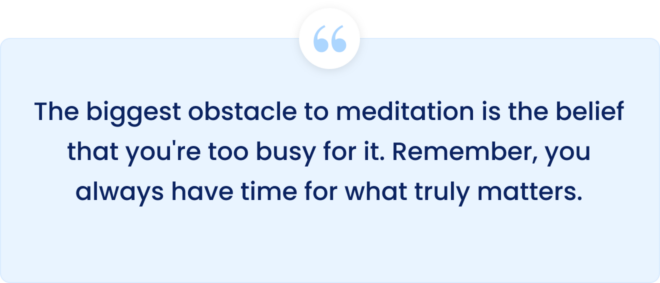
Mindfulness, he explains, is distinct from meditation. It involves cultivating an awareness of the present moment, both externally and internally. In our lives, we often get caught up in the worries of the past and future, losing sight of our current circumstances and the actions we need to take. Mindfulness helps us redirect our focus, enabling us to evaluate and improve our present experiences. Let’s delve into the practice of mindfulness.
- Find a comfortable and open space.
- Maintain a straight posture with a straight spine.
- Set a timer for 5 to 10 minutes, especially if you are new to mindfulness.
- Focus on your body, noticing the sensations in your feet, hands, and overall energy.
- Pay attention to your breathing, observing the rhythm and frequency.
- Direct your awareness inward and examine your thoughts.
- Delve deep into your inner self, discerning between actions that serve you well and those that don’t.
After practicing these techniques, you will be able to take better care of your body and experience a lightness of mind. You will be able to live in the present moment freely and determine the steps you should take today for your future.
Chapter 2 Be Present
It is crucial to live in the present moment. Many individuals perceive the present as their friend, but if things aren’t going well, they start considering time as their enemy. This perspective often leads to failure in life. Instead, consider your present as an opportunity to learn and grow.
Every day, strive to learn something new because while everything else may become outdated, the knowledge you gain will always remain with you. So, whether your present circumstances are favorable or not, find something to learn from them each day. Let’s illustrate this with an example.
Imagine you miss out on a business opportunity or a job promotion, and it is given to someone else. It is natural for most people to feel upset, and some may even experience depression or choose to give up. However, you can approach it from a different perspective, viewing it as a lesson.
Reflect on what differentiates you from the person who received the promotion. Identify your mistakes and work twice as hard for a second chance or another opportunity to achieve your goals. By adopting this approach, you increase your chances of success.
Chapter 3 Obsessive Worry and Living in the Present
Many young individuals experience tension and fear when it comes to building their careers. They worry that if they pursue different paths or unconventional courses, they might fail. This mindset prevents them from exploring their true potential. For instance, if they aspire to study a unique subject and build a career in it, family members might discourage them, and self-doubt creeps in.
The author shares his own experience when he pursued journalism despite familial objections. He followed his passion and eventually achieved success, publishing books and becoming a news anchor.
Overthinking often leads us into trouble. When we excessively dwell on the future, we lose sight of the present moment and the path ahead. In such situations, it’s essential to break free from this mental trap.
If you find yourself unsure about what to do or what the future holds, focus on taking the next step. Instead of trying to see too far ahead, proceed one step at a time. Eventually, you will gain clarity and see the way forward. Embrace flexibility and change your mindset regarding the task at hand. To succeed in life, avoid overthinking and concentrate on making each subsequent step a good one. By doing so, your future will unfold positively.
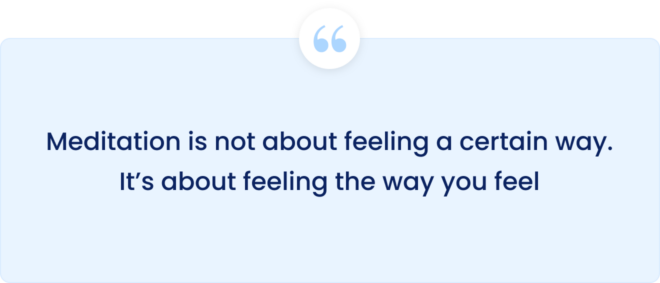
Friends, the author highlights another reason why people worry about their future: the tendency to compare themselves with others. It is incorrect to assume that if someone else couldn’t achieve a certain goal, then you won’t be able to either. There may be various reasons for their lack of success, but justifying your own potential based on their experience is misguided. Instead, prepare yourself with dedication and focus on achieving success in your own endeavors.
For effective preparation, the author suggests delving into another insightful audiobook called “The Power of Self-Discipline” by Peter Hollins. It provides answers to many fundamental questions, such as the purpose of one’s life, the impact of inconsistent routines on happiness, and how to unleash your full potential. By making small habit changes, significant transformations can be achieved.
Chapter 4 Make it R.A.I.
In this chapter, the author introduces a method called RAI that can be helpful when your day isn’t going well or when you face troubling situations or problems in life. RAI stands for Recognize, Allow, and Investigate. By following these steps, you can identify whether the challenges you encounter are genuine problems or simply situations that push you out of your comfort zone. The author provides some tips to overcome these troubles. Let’s understand them:
Step 1: Recognize – The first step is to recognize your difficulties. Determine if the challenges you face are genuinely difficult or if they are merely situations that require you to step out of your comfort zone. Often, what people perceive as difficult is simply a matter of stretching their boundaries. Therefore, it is important to assess the nature of your difficulties accurately.
Step 2: Allow – The second step is to maintain a calm mind and allow yourself to face the challenges. It means granting permission to yourself to overcome these obstacles. Sometimes, when you focus too much on the difficulties, you may feel sad or become discouraged. In such moments, it is crucial to exercise self-control and not allow the challenges to further disturb your state of mind.
Step 3: Investigate – The third and most significant step is to investigate the challenges. After recognizing and allowing them, it’s time to explore them further. Understand why these difficulties have arisen and whether they are genuine obstacles. Investigating the reasons behind these challenges helps you avoid repeating the same mistakes that led to them in the first place. By committing to this process, you can prevent similar difficulties from arising in the future.
Chapter 5 Convert Your Important Work into Urgent Work
In this chapter, the author advises us to convert our important tasks into urgent ones. However, it’s important to understand the distinction between these two types of work. An important task is something that holds significance for you, while an urgent task is one that was important before but has now become a necessity due to procrastination or delay. The author provides an example to illustrate this point.
We all know the importance of paying bills for electricity or water. However, only a few people pay them on time, often waiting until the last date has passed. This delay turns it into an urgent task, disrupting our other activities. Sometimes, urgent tasks end up overshadowing our other work, leading to a breakdown in our daily routine.
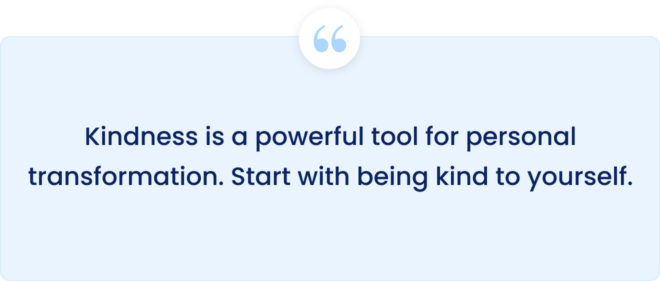
The author does not suggest intentionally delaying important tasks until they become urgent. Instead, the idea is to approach all important tasks with the mindset of treating them as urgent. By completing them promptly, you can avoid unnecessary pressure and ensure the quality of your work. If you find yourself consistently overwhelmed with urgent tasks, the author provides some tips to help you complete your important work before it reaches the point of becoming urgent.
One tip is to pay bills, such as electricity bills, on the same day you receive them. This eliminates any lingering tension and prevents important tasks from turning into urgent ones. Another tip is to set aside a specific day each week dedicated to completing all your urgent tasks. On this day, you prioritize and accomplish crucial tasks that cannot be postponed any longer, such as bill payments and house rent.
Chapter 6 Start Enjoying Your Journey
In this chapter, the author discusses the importance of enjoying the journey towards becoming a great individual. While achieving success may bring you fame, wealth, and recognition, it is equally important to derive enjoyment from the process. A survey revealed that 90% of aspiring entrepreneurs are solely focused on becoming rich quickly, rather than appreciating the journey itself. However, true fulfillment and growth come from experiencing and savoring the journey.
For instance, if a novice is given a business to run, approximately 90% of people would fail because they lack the necessary experience. Success in business is a result of learning and growing through the journey. Therefore, it is essential to embrace the process of personal and professional development, continuously learning and finding enjoyment along the way.
If you aspire to become a successful and great individual, hard work is essential. However, there are two ways people approach this struggle. The first way, which 90% of unsuccessful people adopt, is to view their struggle as a difficult time filled with agitation, yearning for an end to their problems as quickly as possible.
The second way, chosen by the remaining 10% of successful people, involves perceiving the struggle with a positive mindset. They see it as a learning phase, recognizing that through struggle, they can gain valuable lessons. If they have less money today, they strive to learn better ways to earn money and apply that knowledge to increase their earnings. To enjoy your journey and struggle, adopt the following methods:
Point 1: Determine what you want to achieve in life. Whether it’s becoming a successful businessperson or excelling in sports, clarity about your goals is crucial.
Point 2: Once you’ve identified your desired field, embrace the struggle and find joy in it. Every day, learn something new from your challenges to improve and rectify mistakes.
Point 3: One vital point is that 90% of people become disheartened by their failures. For instance, if they start a business and it fails, they cry and abandon it, returning to a regular job. On the other hand, the remaining 10% analyze their failures, identify the reasons behind them, and use that knowledge to make necessary improvements. They restart their business with even more determination and hard work, ultimately achieving success. Therefore, find the mistakes in your failures and work towards rectifying them.
Chapter 7 Practice Letting Go
In this chapter, the author emphasizes that success requires a combination of factors, including hard work, focus, and the ability to let go. Many people wonder what will be left if they let go of something after putting in so much time and effort. It is a valid question.
For example, let’s say you started a business with a partner, but halfway through, that partner leaves, resulting in significant losses. Two scenarios can arise. In the first scenario, you let go of that person and restart your business with renewed motivation. In the second scenario, you try to hold that person accountable and recover the incurred losses. Most people opt for the second approach, but it often leads to anger, arrogance, and a desire for revenge.
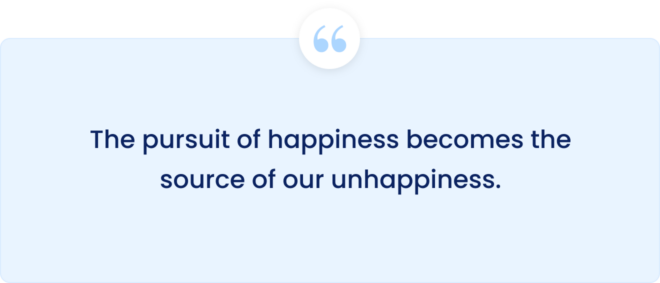
To the young generation watching this, aspiring to achieve great things in life, remember that not everyone will stand by you when their needs are fulfilled. Holding onto anger and seeking revenge will diminish your overall happiness. Instead, consider how you can improve yourself and find inner calm.
If someone has deceived you, learn from the experience to prevent future mistakes and focus on your own growth. By channeling your time and energy into productive work rather than seeking revenge, you can move forward with renewed vigor.
Chapter 8 The Need for a Combination of Smart Work and Hard Work
In this chapter, the author emphasizes that to achieve success, it is crucial to combine both smart work and hard work. For instance, consider the difference in earnings between a rickshaw puller who works hard for eight hours a day and a businessman who spends eight hours in air-conditioned comfort. The rickshaw puller works tirelessly, but the businessman’s complex and intelligent work enables him to earn significantly more.
The author clarifies that it doesn’t mean one should solely focus on smart work and disregard hard work. Success requires a balance of both. If you are smart but don’t put in the necessary hard work, you won’t achieve success. Similarly, if you work hard without employing intelligent strategies, it may take longer to succeed. Let’s understand this with an example.
Suppose you open a store selling everyday items. With hard work alone, you would personally approach people, inform them about your shop, and invite them to visit and make purchases. This approach may reach 500, 1000, or 2000 people, but expanding beyond that would be challenging. On the other hand, by incorporating smart work, you can attract more customers in less time.
Utilizing the power of the internet, you can create an online website or join various platforms to promote your store. With this approach, you can potentially reach millions of people. Leveraging the internet’s vast user base, you have the opportunity to attract numerous customers who will purchase your goods.
Chapter 9 Dan Harris’s Perspective
Dan Harris, a retired reporter formerly associated with ABC News, had an illustrious career as the anchor of Nightline and co-anchor of Good Morning America. He covered a wide range of stories, including war zones and mass shootings, and even reported live from war zones and solitary confinement.
His exceptional reporting earned him the Edward R. Murrow Award and an Emmy Award in 2009. However, during his time at ABC News, Harris often experienced distress and fell into depression. In 2004, he even had an on-air panic attack.
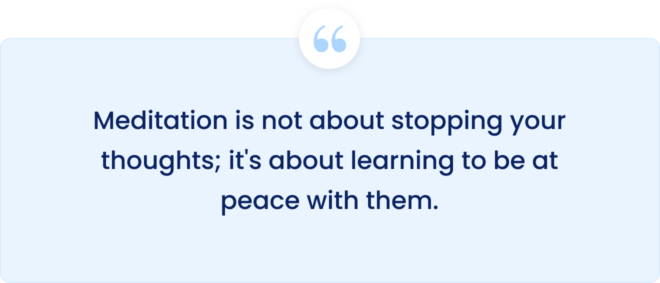
To overcome his depression, Harris turned to mindfulness and meditation. Embracing these practices during challenging times gave him a glimmer of hope. He discovered that meditation held the key to his problems and helped him emerge from the darkest period of his life.
In the book, Harris explains the RAIN technique, which stands for Recognize, Allow, Investigate, and Non-Identification. This technique involves recognizing your emotions during difficult moments, allowing those emotions to exist without judgment, investigating how they affect your state of mind, and realizing that your emotions do not define you. You have the power to choose how you feel.
10% Happier chronicles Dan Harris’s personal journey from a stressed news anchor to an active and content meditator. If you have doubts about meditation, this book will enlighten you on its purpose and guide you on using meditation to find satisfaction in life.
Chapter 10 Ways to Be Happy
- Practice Compassion
In 10% Happier, Dan Harris shares his experiences as a news reporter, including a memorable interview with the Dalai Lama. This chapter highlights the importance of practicing compassion. The Dalai Lama explains that kindness in our daily lives leads to happiness. He recognizes that our natural inclination is to prioritize ourselves, a habit rooted in self-defense. However, overcoming this habit is crucial for attaining the happiness we deserve.
If you ever doubt the power of kindness, try being compassionate towards others. You will experience a sense of fulfillment. Scientific research reveals that acts of kindness trigger the release of happy hormones in our brains. When we feel joy, we are more inclined to show kindness. It becomes a cycle of perpetual happiness: kindness brings joy, and joy fosters kindness.
So, when you find yourself entangled in selfish thoughts, look around—you may find someone who needs your help, or you can offer assistance yourself.
- Be Kind to Yourself
Continuing the theme of compassion, it is important to extend that kindness to yourself. The book references a saying from Sufi Muslims: “Worship Allah, but also tie your camel to a pole.” This proverb offers valuable lessons.
First, it emphasizes the importance of taking action alongside prayer. While prayer is significant, it is equally essential to proactively pursue our goals. Second, being kind to others is important, but there are situations where it may not be the best choice. It is possible to be kind while also maintaining personal boundaries. To find internal happiness, it is necessary to identify what brings you contentment and to what extent you should prioritize others’ opinions to preserve that feeling.
Rather than perceiving limitations as shortcomings, consider them positive indicators. Boundaries and limitations help us determine our choices and actions. For instance, if you choose not to work on weekends, it allows you to confidently decline weekend shifts.
It is essential to communicate your reasons openly, such as prioritizing spending time with your children. When you express yourself honestly, people will respect your decision and offer support.
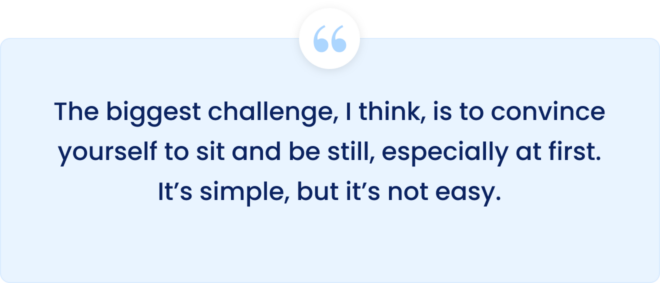
- Focus on What Matters
Remember, not everything deserves your time and energy. Distinguishing between what is worth your attention and what is not is crucial for cultivating happiness. Dan Harris emphasizes that daily decisions, no matter how small, influence our emotional state. When faced with worry, ask yourself, “Is it worth worrying about?”
If your attention helps address a particular issue, then dedicate your focus to it. However, do not forget to appreciate and enjoy your present circumstances. Neglecting to do so allows negative emotions to overpower your mindset.
On the other hand, if worrying serves no purpose and only contributes negativity to your life, exercise self-control and redirect your attention. While you may not immediately shift your focus, you can regain control of your emotions and halt negative thoughts. Spending excessive time worrying about trivial matters or things beyond your control diminishes happiness.
Until now, we may have believed that we must control everything. However, in reality, it is not our responsibility to manage external circumstances. We only have control over our own responses to what the world throws at us. Attempting to control uncontrollable situations only leads to emotional distress. So, the next time you find yourself worrying, ask yourself if it is worth your energy.
- Creativity Does Not Require Depression
The common narrative often portrays artists as individuals who must go through depression and challenges to create something meaningful. However, 10% Happier challenges this notion by emphasizing that happiness and creativity are not mutually exclusive. Finding happiness does not diminish creativity or stifle imagination.
There is no need to believe that you must be in a state of depression to produce art. In fact, when we free ourselves from the burdens of worry, we can explore our creativity more effectively. When our minds are unburdened by various concerns, we have the space and time to think and let our creative ideas flow.
Conclusion
To recap what we have learned from the book, let’s summarize the key points:
- Practicing mindfulness and meditation helps calm our minds.
- Through mindfulness and meditation, we can identify our daily mistakes and find ways to correct them.
- Excessive worry about the past and future is detrimental; instead, embrace the present moment and live freely.
- Embrace and enjoy the struggles you encounter on your journey.
- Combining hard work and innovative thinking leads to quicker success.
We hope that you have gained valuable insights from the book 10% Happier and will apply these principles to your own life.
10% Happier Book Review
In 10% Happier, Dan Harris takes readers on a relatable and insightful journey towards finding happiness through mindfulness and meditation.
With personal anecdotes, scientific research, and practical advice, Harris dismantles misconceptions and presents meditation as a practical tool for skeptics.
The book’s structure is well-organized, and Harris’s engaging writing style keeps readers captivated. While some sections may feel repetitive and lack depth, 10% Happier offers profound insights and practical tools for navigating stress and anxiety.
Overall, it’s a recommended read for those seeking happiness and peace in their lives.
Contents

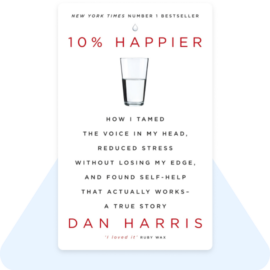
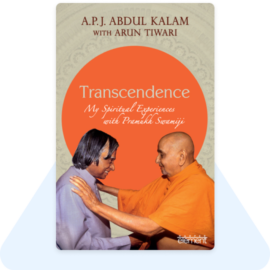
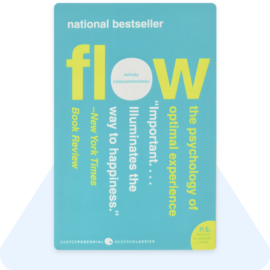
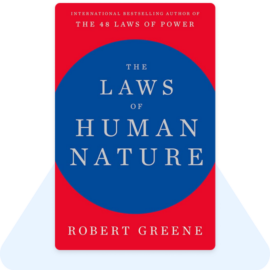

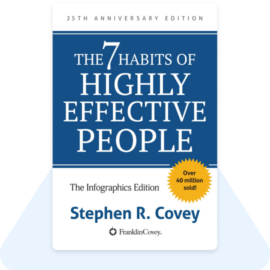
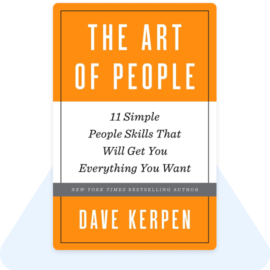
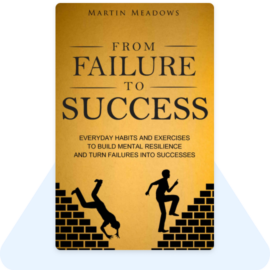
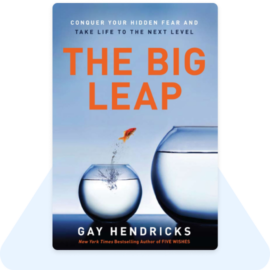
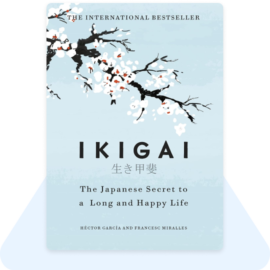
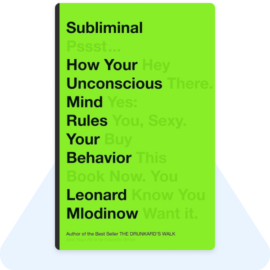

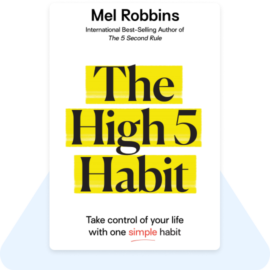
10% Happier
Mindfulness helps you to live your life.
#mindfulness and meditation.Beautiful illustration by Dan Harris. Many thanks, Team RBC